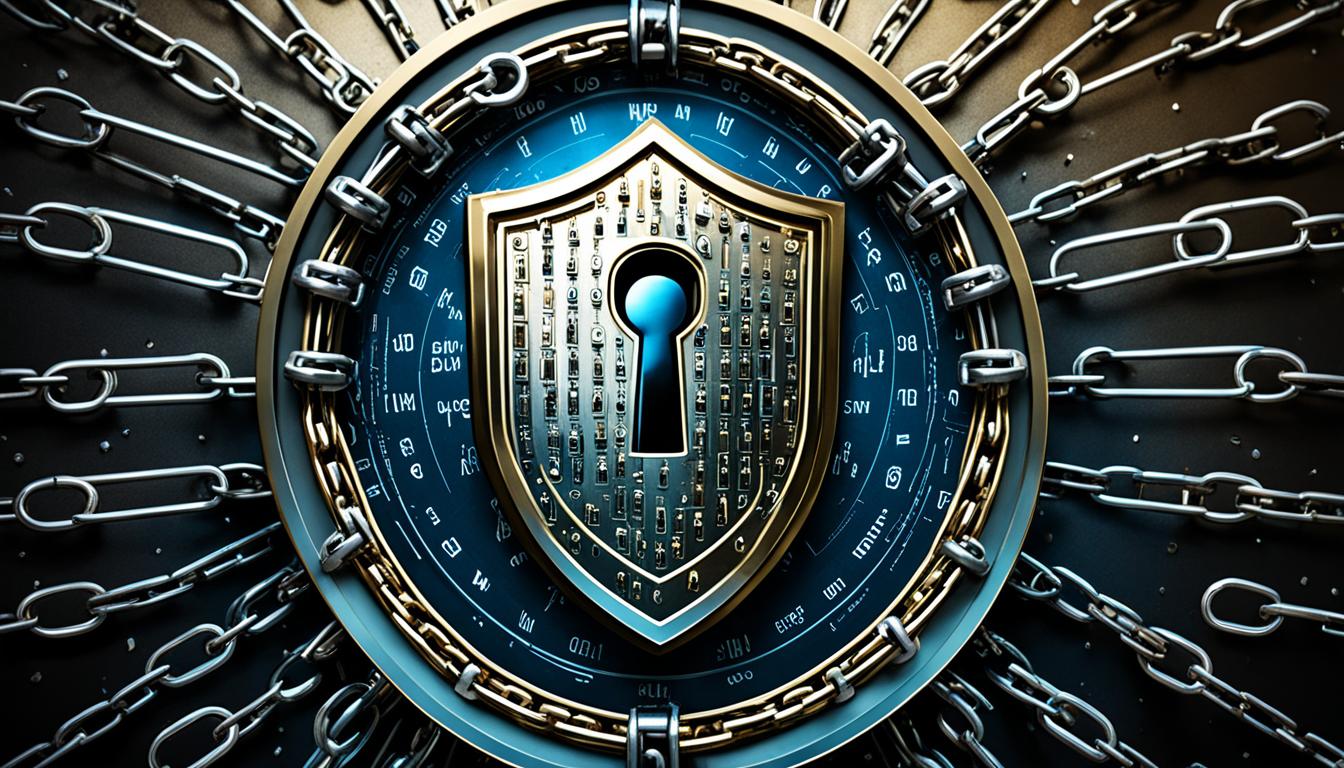As small and medium enterprises (SMEs) increasingly become targets of cyber threats, it is crucial for these businesses to prioritize cybersecurity. The NIST SP800-37 provides essential guidelines and measures specifically tailored for SMEs to protect themselves against cyber threats and safeguard their digital presence. By following these tips and implementing cybersecurity best practices, SMEs can mitigate the risks associated with cyber attacks and ensure the security of their sensitive data and business operations.
At [Your Company Name], we understand the unique challenges SMEs face when it comes to cybersecurity. With our expertise in the field, we have compiled a comprehensive list of essential SP800-37 tips for SME cybersecurity. These actionable insights will provide SMEs with the knowledge and guidance they need to enhance their cybersecurity measures and protect their digital assets from potential cyber threats.
So, whether you are a small business owner looking to strengthen your cybersecurity or an IT professional responsible for securing your organization’s digital infrastructure, read on to discover the essential SP800-37 tips that will help you safeguard your SME from cyber threats.
– Understanding the importance of cybersecurity for SMEs
– Conducting a risk assessment to identify vulnerabilities
– Implementing cybersecurity controls based on identified risks
– Creating information security policies and procedures
– Educating employees on cybersecurity awareness
– Regularly monitoring and updating cybersecurity measures
– Partnering with cybersecurity experts
– Keeping up with cybersecurity regulations and standards
– Committing to continual improvement of SME cybersecurity
With our experience in working with SMEs, we know that every organization has unique requirements and challenges when it comes to cybersecurity. Our insights will help you tailor these essential tips to your specific business needs, ensuring maximum protection against cyber threats. Let’s dive in and take your SME’s cybersecurity to the next level.
Understanding the Importance of Cybersecurity for SMEs
Cybersecurity is a critical aspect that SMEs cannot afford to overlook. As cyber threats continue to evolve, SMEs are increasingly becoming targets of malicious actors seeking to exploit their vulnerabilities. Unlike larger organizations, SMEs often have limited resources and may not have dedicated IT departments, making them more susceptible to cyber attacks.
It is essential for SMEs to recognize the significance of cybersecurity and take proactive steps to protect their sensitive data, financial information, and intellectual property. By implementing effective cybersecurity measures, SMEs can safeguard their digital assets and maintain the trust of their customers and partners.
The Growing Cyber Threat Landscape for SMEs
SMEs are facing an ever-expanding range of cyber threats that can have devastating consequences:
- Phishing and social engineering attacks: Cybercriminals use deceptive tactics to manipulate individuals into revealing sensitive information or performing malicious actions.
- Ransomware attacks: SMEs are targeted with malicious software that encrypts their data, demanding a ransom for its release.
- Insider threats: Employees or business partners with malicious intentions can exploit their access privileges to compromise the security of an SME.
- Third-party breaches: SMEs may unknowingly become victims of cyber attacks targeting their supply chain or business partners.
The Impact of Cyber Attacks on SMEs
When SMEs fall victim to cyber attacks, the consequences can be severe:
| Impact | Description |
|---|---|
| Data breaches | Loss or theft of sensitive customer information, resulting in reputational damage and potential legal liabilities. |
| Financial losses | Downtime, operational disruptions, and financial theft can lead to significant financial losses for SMEs. |
| Intellectual property theft | Exposure of proprietary information and trade secrets, undermining competitive advantage. |
| Loss of customer trust | Cyber attacks can erode customer confidence and loyalty, impacting long-term business viability. |
To mitigate these risks and protect their businesses, SMEs must take proactive measures to enhance their cybersecurity posture. By implementing industry best practices and staying informed about emerging threats, SMEs can effectively combat the ever-evolving cyber landscape.
Conducting a Risk Assessment for Small Businesses
In order to strengthen cybersecurity measures for small and medium businesses (SMEs), conducting regular risk assessments is essential. This process allows SMEs to identify and evaluate potential cyber threats to their business’s security. By performing a risk assessment, SMEs can pinpoint vulnerabilities in their systems and implement effective measures to protect against these threats.
During the risk assessment, SMEs should focus on the identification of valuable assets, potential threats, and the evaluation of the likelihood and impact of each threat. By considering these factors, businesses can gain a comprehensive understanding of the risks they face. This assessment forms the foundation for implementing cybersecurity controls and measures.
Once the risks are identified, SMEs can proceed with the implementation of controls to mitigate these risks. Controls may include utilizing strong authentication protocols, securing networks and firewalls, regularly updating software and operating systems, and encrypting sensitive data. These measures help ensure the confidentiality, integrity, and availability of important information.
To maintain the effectiveness of implemented controls, regular testing and reviewing are crucial. Periodic assessments and audits allow SMEs to identify any weaknesses in their cybersecurity measures and make necessary improvements. By continuously monitoring and reviewing their cybersecurity framework, businesses can stay ahead of emerging threats and adapt their defenses accordingly.
Benefits of Conducting a Risk Assessment
Conducting a risk assessment for small businesses offers several benefits:
- Identify vulnerabilities: By assessing risks, SMEs can identify vulnerabilities within their systems and prioritize their cybersecurity efforts.
- Optimize resource allocation: A risk assessment helps SMEs allocate their resources effectively, ensuring that cybersecurity measures are implemented where they are most needed.
- Enhance incident response: Understanding potential threats allows businesses to develop incident response plans, enabling them to respond quickly and effectively in the event of a cyber attack.
- Compliance with industry standards: A risk assessment helps SMEs align their cybersecurity practices with industry standards, such as NIST SP800-37, ensuring regulatory compliance.
Conducting a risk assessment is an integral part of a comprehensive cybersecurity strategy for SMEs. By proactively identifying threats and implementing appropriate measures, businesses can significantly reduce their vulnerability to cyber attacks and safeguard their digital assets.
Implementing Cybersecurity Controls
To enhance cybersecurity, small and medium enterprises (SMEs) should implement a range of cybersecurity best practices and measures based on the identified risks. By implementing these controls, SMEs can significantly reduce their vulnerability to cyber attacks.
Key Best Practices
Implementing the following cybersecurity controls can help SMEs protect their digital assets and maintain a secure online presence:
- Firewalls and Antivirus Software: Installing firewalls and antivirus software can provide a robust defense against unauthorized access and malware infections.
- Strong Passwords and Two-Factor Authentication: Implementing strong password policies and using two-factor authentication can significantly enhance the security of user accounts and mitigate the risk of unauthorized access.
- Regular Security Training: Conducting regular security training sessions for employees can educate them about cybersecurity best practices, such as identifying phishing attempts and avoiding suspicious links.
- Limiting Employee Access: Controlling access to sensitive data and systems based on job roles and responsibilities can minimize the impact of insider threats.
- Patching Operating Systems and Applications: Keeping operating systems and applications up to date with the latest security patches helps address known vulnerabilities and strengthens overall cybersecurity.
- Securing Wireless Access Points and Networks: Implementing encryption for wireless networks and securing access points can prevent unauthorized access and protect sensitive data transmitted over the network.
- Encryption for Sensitive Business Information: Implementing encryption for sensitive business information, such as customer data or intellectual property, can protect the confidentiality and integrity of the data.
Benefits of Implementing Cybersecurity Controls
By adopting these cybersecurity best practices, SMEs can experience several advantages:
- Reduced Risk: Implementing controls based on industry best practices, like those provided by NIST SP800-37, can significantly reduce the risk of cyber attacks, data breaches, and financial losses.
- Enhanced Reputation: Demonstrating a commitment to cybersecurity through robust controls can enhance customer trust and confidence in the organization’s ability to protect their sensitive information.
- Compliance with Regulatory Standards: Implementing cybersecurity controls aligned with industry regulations and standards helps ensure compliance, preventing potential legal and financial consequences.
- Minimized Downtime: Robust controls can help prevent cyber incidents and reduce the impact of successful attacks, minimizing potential downtime and disruption to business operations.
Implementing comprehensive cybersecurity controls is a crucial step for SMEs to safeguard their digital assets, protect sensitive information, and proactively mitigate the risks associated with cyber threats.
| Benefits of Implementing Cybersecurity Controls | |
|---|---|
| Reduced Risk | Implementing controls based on industry best practices can significantly reduce the risk of cyber attacks, data breaches, and financial losses. |
| Enhanced Reputation | Demonstrating a commitment to cybersecurity through robust controls enhances customer trust and confidence. |
| Compliance with Regulatory Standards | Implementing controls aligned with regulations helps ensure compliance, preventing potential legal and financial consequences. |
| Minimized Downtime | Robust controls help prevent cyber incidents and minimize potential downtime and disruption to business operations. |
Creating Information Security Policies and Procedures
At our company, we understand the importance of consistent and effective cybersecurity practices for small and medium enterprises (SMEs). To ensure the protection of sensitive data and mitigate cyber risks, SMEs should develop and implement information security policies and procedures. These policies establish clear guidelines and protocols for maintaining a secure digital environment.
Below are essential elements that SMEs should consider when creating information security policies and procedures:
- Access Control: Implement access control measures to restrict unauthorized individuals from accessing sensitive information or systems. This includes utilizing strong passwords, multi-factor authentication, and role-based access controls.
- Background Checks: Conduct thorough background checks on employees who have access to critical data or systems to ensure their trustworthiness and reduce the risk of insider threats.
- Individual User Accounts: Assign individual user accounts to employees, enabling better tracking and accountability for actions taken within the digital environment.
- Secure Disposal: Establish procedures for the secure disposal of old computers and media to prevent unauthorized access to sensitive information. This includes proper data wiping and physical destruction methods.
- Disaster Recovery and Incident Response Plans: Develop comprehensive plans that outline steps to be taken in the event of a cyber incident or natural disaster. These plans should include procedures for data backup, system recovery, and communication with stakeholders.
By implementing these information security policies and procedures, SMEs can establish a culture of cybersecurity awareness and ensure that everyone within the organization understands their role in protecting the business.
Example Information Security Policy:
| Policy | Description |
|---|---|
| Access Control | Utilize strong passwords, multi-factor authentication, and role-based access controls to restrict unauthorized access to systems and information. |
| Background Checks | Conduct thorough background checks on employees who will have access to critical data or systems. |
| Individual User Accounts | Assign individual user accounts to employees for better tracking and accountability. |
| Secure Disposal | Establish procedures for the secure disposal of old computers and media to prevent unauthorized access to sensitive information. |
| Disaster Recovery and Incident Response Plans | Develop comprehensive plans that outline steps to be taken in the event of a cyber incident or natural disaster. |
By having a well-defined information security policy in place, SMEs can significantly enhance their cybersecurity posture and protect themselves against potential threats.
Educating Employees on Cybersecurity Awareness
Employee education and training are essential components of a comprehensive cybersecurity strategy for SMEs. At our company, we understand the importance of equipping our employees with the knowledge and skills to protect our digital assets. That’s why we conduct regular cybersecurity awareness training sessions to educate our team about potential threats, safe online practices, and the importance of following information security policies and procedures.
By increasing employee cybersecurity awareness, we can mitigate the risks associated with human error and create a strong line of defense against cyber attacks. Our training covers topics such as identifying phishing emails, using strong and unique passwords, recognizing suspicious activities, and reporting any security incidents. We also emphasize the importance of keeping software and systems up to date and being cautious when accessing sensitive information.
Through interactive workshops, we ensure that our employees understand the potential consequences of a cybersecurity breach and how their actions can impact our overall security posture. By fostering a culture of cybersecurity awareness, we empower each team member to play an active role in protecting our organization from cyber threats.
In addition to training sessions, we provide ongoing resources and reminders to reinforce good cybersecurity practices. This includes sharing informative articles, sending regular security tips via email, and conducting simulated phishing exercises to test our employees’ ability to identify and respond to potential threats.
By prioritizing employee cybersecurity education, we demonstrate our commitment to maintaining a strong cybersecurity posture. We believe that a well-informed and vigilant workforce is our best defense against cybercriminals.
Key Takeaways:
- Regular cybersecurity awareness training is crucial for SMEs to protect their digital assets.
- Training should cover topics such as phishing awareness, password security, and incident reporting.
- By fostering a culture of cybersecurity awareness, employees become active participants in protecting the organization.
- Ongoing resources and reminders help reinforce good cybersecurity practices.
Regularly Monitoring and Updating Cybersecurity Measures

Cybersecurity is an ongoing process that requires constant vigilance and updates. As SMEs face evolving cyber threats, it is crucial to regularly monitor and update their cybersecurity measures to ensure maximum protection. By staying proactive and adopting cybersecurity best practices, SMEs can mitigate the risks associated with cyber attacks and safeguard their digital presence.
Regular Maintenance of Protective Software
One of the key aspects of monitoring and updating cybersecurity measures is the regular maintenance of protective software. This includes antivirus, anti-spyware, and other malware programs that form the first line of defense against cyber threats. By keeping these programs up to date, SMEs can effectively detect and prevent the infiltration of malicious software that could compromise their systems.
Monitoring System Logs and Audit Trails
In addition to maintaining protective software, SMEs should regularly monitor system logs and audit trails. These logs provide valuable insights into system activities, enabling early detection of potential security breaches or abnormal behavior. By closely monitoring these logs, SMEs can identify and address security incidents promptly, minimizing the potential damage caused by cyber attacks.
Periodic Security Audits and Penetration Tests
To ensure the effectiveness of cybersecurity measures, SMEs should conduct periodic security audits and penetration tests. Security audits assess the overall security posture of the organization, identifying vulnerabilities and areas for improvement. Penetration tests simulate real-world cyber attacks to identify weaknesses in systems and networks. By performing these tests regularly, SMEs can identify and address vulnerabilities before they are exploited by malicious actors.
Staying Informed about Cybersecurity Threats and Best Practices
Effective cybersecurity monitoring and updating requires staying informed about the latest threats and best practices. SMEs should actively seek information from trusted sources, such as government cybersecurity agencies, industry publications, and cybersecurity conferences. By staying up to date with the evolving cybersecurity landscape, SMEs can adapt their measures and stay ahead of emerging threats.
Continual Improvement in Cybersecurity
Regularly monitoring and updating cybersecurity measures is part of a continual improvement process. It is important for SMEs to understand that cybersecurity is not a one-time investment, but an ongoing commitment to protect their digital assets. By continually assessing and enhancing their cybersecurity measures, SMEs can stay resilient against cyber threats and maintain the trust of their customers and stakeholders.
Partnering with Cybersecurity Experts
SMEs can greatly benefit from partnering with cybersecurity experts who specialize in protecting businesses against cyber threats. By collaborating with managed security service providers (MSSPs) or cybersecurity consultants, SMEs can gain access to specialized knowledge and resources that help them assess their cybersecurity risks, implement effective controls, and respond to potential attacks.
Partnering with cybersecurity experts enhances the overall cybersecurity posture of SMEs. These experts bring a depth of experience and expertise that may not be available in-house, enabling SMEs to effectively combat cyber threats and safeguard their valuable digital assets.
Cybersecurity experts can assist SMEs in conducting comprehensive risk assessments, identifying vulnerabilities, and recommending specific controls tailored to their unique needs. This proactive approach ensures that SMEs stay ahead of potential threats and are better equipped to defend against cyber attacks.
Moreover, partnering with cybersecurity experts also provides SMEs with the advantage of staying up to date with the evolving threat landscape. These experts constantly monitor emerging cyber threats, technological advancements, and industry standards. By leveraging their knowledge and insights, SMEs can adapt their cybersecurity measures to address new and emerging risks, ensuring their ongoing protection.
In summary, partnering with cybersecurity experts is a valuable strategy for SMEs looking to strengthen their cybersecurity defenses. By collaborating with these professionals, SMEs can leverage their specialized knowledge, resources, and ongoing support to effectively mitigate cyber threats and enhance their overall cybersecurity posture.
Keeping Up with Cybersecurity Regulations and Standards

SMEs must stay informed about the latest cybersecurity regulations and industry standards to ensure the protection of their digital assets. Compliance with these regulations is crucial for preventing legal and financial consequences. One such important resource for cybersecurity best practices is the NIST SP800-37 framework.
The NIST SP800-37 provides comprehensive guidelines and recommendations for SMEs to enhance their cybersecurity posture. This framework outlines the necessary steps to identify, assess, and manage cyber risks effectively. By adopting the practices outlined in NIST SP800-37, SMEs can align their cybersecurity measures with industry standards and regulations, reducing the likelihood of cyber incidents and improving their overall security.
Additionally, SMEs should stay aware of other cybersecurity frameworks and standards relevant to their industry and geographical location. The evolving landscape of cyber threats necessitates ongoing monitoring and adaptation of cybersecurity measures to address emerging risks effectively. By keeping up with the latest regulations and standards, SMEs can stay one step ahead of cybercriminals and maintain robust cybersecurity defenses.
Benefits of Keeping Up with Cybersecurity Regulations and Standards
Adhering to cybersecurity regulations and standards offers several advantages for SMEs:
- Legal Compliance: Compliance with regulations ensures that SMEs meet legal requirements and avoid potential penalties or lawsuits related to cybersecurity breaches.
- Customer Trust and Reputation: Demonstrating compliance with cybersecurity standards builds trust with customers, enhancing the reputation and credibility of SMEs.
- Competitive Advantage: Compliance with industry standards allows SMEs to differentiate themselves from competitors and attract customers who prioritize cybersecurity.
- Better Risk Management: Following cybersecurity regulations and standards helps SMEs identify and mitigate potential risks, minimizing the likelihood of cyber incidents.
- Improved Incident Response: Compliance with standards ensures that SMEs have established incident response plans to effectively address and mitigate the impact of cyber attacks.
Continual Improvement of SME Cybersecurity
As SMEs navigate the ever-evolving cybersecurity landscape, it is crucial to understand that cybersecurity is not a one-and-done endeavor. Instead, it should be viewed as an ongoing process of continual improvement. By committing to this approach, SMEs can enhance their cybersecurity posture, protect their digital assets, and safeguard their reputation.
Regular assessment of cybersecurity measures is vital for SMEs. By conducting periodic evaluations, we can identify any weaknesses or vulnerabilities in our systems and take proactive measures to address them. This includes staying updated with the latest cybersecurity best practices and implementing necessary changes to ensure robust protection against cyber threats.
Furthermore, keeping our policies and procedures up to date is essential. As cyber threats continue to evolve, so do the preventive measures needed to combat them. Therefore, regularly reviewing and updating our information security policies and procedures is crucial in staying ahead of potential risks. By doing so, we foster a culture of cybersecurity awareness within our organization.
Continuous employee training is another key aspect of improving SME cybersecurity. By educating our employees on the latest threats and best practices, we empower them to be active participants in safeguarding our digital environment. Regular training sessions ensure that our workforce remains equipped with the knowledge and skills necessary to identify and respond to potential cyber threats.
Lastly, staying updated with the ever-changing cybersecurity landscape is paramount. By staying informed about new cyber threats, emerging technologies, and evolving regulations, we can adapt our cybersecurity measures accordingly. This allows us to address emerging risks promptly and ensure that our defenses remain strong.
As SMEs, we have a responsibility to prioritize cybersecurity and continually enhance our defenses. By embracing the concept of continual improvement, regularly assessing our measures, updating policies and procedures, training employees, and staying informed, we can confidently protect our digital assets and maintain the trust of our customers and stakeholders.







